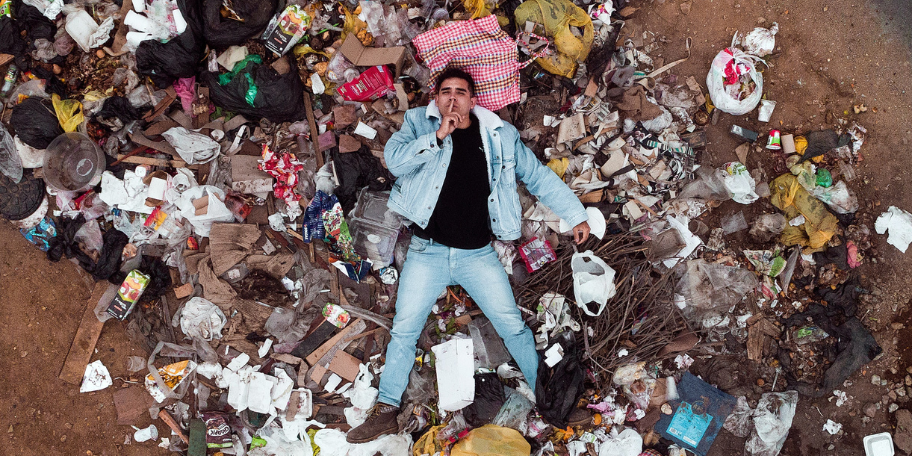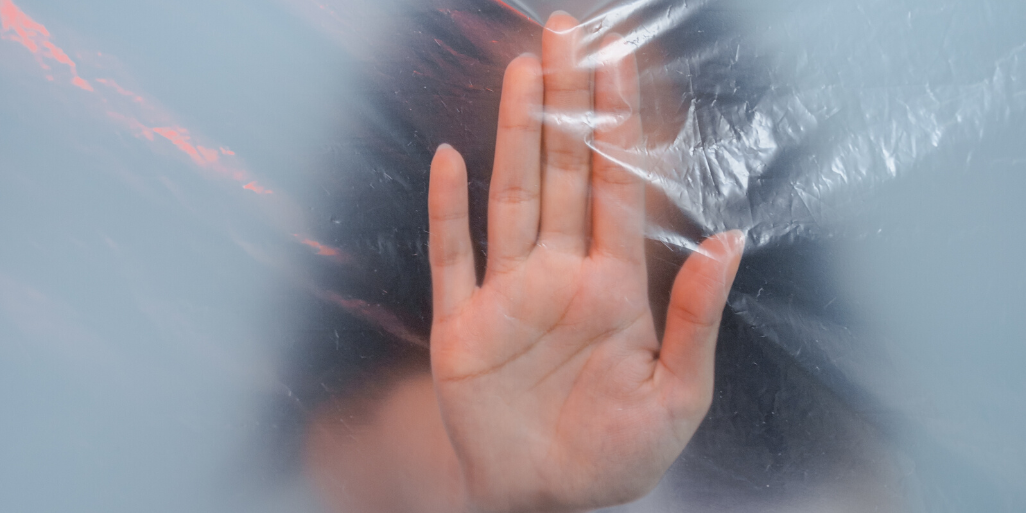Responsible Recycling at Home: A Very Helpful Guide to Sustainability

Contrary to most first guesses, the first two steps of responsible recycling at home aren’t recycling at all. Instead, true sustainability begins with the first two “Rs of the waste hierarchy,” reduce and reuse. Rather than buying cosmetics packaged in single-use plastics, avoid recycling altogether by reducing how much waste you generate.
Here are some VERY EASY tips for minimizing your waste:
- Give preference to biodegradable products and packaging
- Repair, resole, and rehome clothing and accessories before you throw them away
- Support local laws in favor of imposing a plastic tax on big businesses that use virgin plastic for their products (so they pay and not us or the planet)
- Buy products with minimal packaging or none at all (QMBeautiques’s Charcoal Tea Tree & Mint Purifying Face and Body Bar or Lush’s shampoo bars are great examples of minimal or zero packaging.)
- Compost paper scraps, cardboard, planet-food waste, and much more
Recycling at home can be challenging, especially for those who lack the ‘know-how’. To help people navigate the murky process of being a responsible consumer, we’re breaking down the problems with plastic recycling, the solutions, and best practices.
With that said, making eco-friendly choices may seem like a lot at first, and that's because it is! Since most people under 40 are from the one-use plastic generation: reducing, reusing, and recycling will be more than what they’re used to. However, some things are more important than easy use, such as our planet remaining clean and safe for all who call it home.
The Problem with Plastic Recycling
In spite of claims that plastic bottles can be recycled as many as ten times, the truth is they can only be reprocessed a few times before the plastic polymers lose their integrity. Recycled bottles need virgin(new) materials to regain quality. On top of that, recycling this material is generally tricky, because not all container types are accepted by certain facilities. In some cases, a recycling triangle may be present but the type of plastic isn’t reusable at all.

If you don't live in a country like Germany, lauded for its green efforts, there's a good chance you're sorting wrong anyways: and we’re not saying that to shame anyone. Early marketers weren't exactly transparent about how tricky it is to recycle single-use plastics. (They had products to sell, not a planet to consider.)
But be careful with placing ‘super recycling’ countries up on a pedestal, as they, like many other developed countries often export their recyclables out to countries with cheaper processing overhangs.
Essentially, most developed countries make closing the end of the loop someone else's problem, and that solves nothing.
Sorting and shipping out is also proving to be a horrendous failure since China has placed heavier conditions on the quality and conditions of materials sent over. Shipments won’t be accepted if the contamination levels are higher than 0.5% or if items fall under the many recyclables they placed bans on(including plastics).
With China tightening regulations, developed countries are left with the harsh reality of finding places to put it all.
But it’s not China’s fault either, the infrastructure is falling apart because of the assumption that it operated as a one-trick pony when it can’t be. Remember, there are three R’s in the waste hierarchy: reduce, reuse, and then as a last measure recycle (correctly).
Whole bins of recycling often end up in a landfill because someone doesn’t know how to sort it all out. At the end of the day, everyone has to learn the rules of recycling, and nobody should feel embarrassed about it. However, don’t assume if the recycling is sorted incorrectly, someone else will fix it for you. A half-full yogurt container or oily pizza box could cause the whole lot to be rejected and it goes to the dump. A lot of industry professionals call this type of recycling “wishcycling,” and it uses up a lot of public and private resources.
There are a lot of problems with plastic recycling, but that doesn’t mean we should stop trying to find solutions. In the meantime, we can all do one critical thing: buy less plastic.
The Quick Sorting Checklist
Here are a few best practices for recycling, please refer back to this checklist as much as you like. We also recommend printing your local waste management requirements and posting them by the bins for quick reference.
- Is the recyclable item clean and dry? Always rinse out containers and tins.
- Does the container have a number 1 or 2 marked inside a triangle made of arrows? These are the widely accepted plastic types and can safely go in your mixed recycling or plastic recycling bin.
- Number 3 containers are NOT recyclable. If it’s confusing because it’s surrounded by the recycling triangle, know that’s because the brand wants to appear eco-friendly.
- Plastics numbered 4-7 are difficult to reclaim, so check if your local facility accepts them first.
- Remove all lids completely from aluminum cans, not halfway.
- Aluminum tubes (think for garlic or tomato paste) can also be recycled.
- Likewise, aerosol cans can go in the bin (but the plastic lids must be removed before doing so.)
- Paper, vegetable scraps, cardboard, coffee grounds, and more, can go in your composting bin. If you’re curious about how to compost check out this really handy article we wrote.
- Paper products with shiny/glossy plastic polymer coatings cannot be recycled.
- If you aren't sure whether something can be recycled and don't want to look it up, don't mix it with stuff you know can be, because everything may be rejected.
Best Practices for Recycling Glass
In contrast to plastic, glass recycles well, with its integrity mostly kept throughout the process time and time again. The issue is glass is hard to recycle. Depending on your local garbage collector, you may be able to place your cleaned and intact glass on the curb near your blue bin to ensure it actually gets recycled.
Transport, weight, contamination, and incorrect recycling can lead to over half of the glass containers meant to be reused ending up in landfills. If you’re going to do it all you might as well do it right.

Broken glass can be stored in a cardboard box somewhere out of the way, like a garage or shed. Once full you can close the box, label it as containing broken glass, and arrange for pick-up two days before your regular collection.
Taking your glass to the recycling depots yourself is the best way to ensure that it does not end up in a landfill. Drop-off and commercial collection programs tend to yield higher quality recovered container glass, according to Canadian Company, Blue Planet Recycling.
Quebec City has managed to recycle 100 percent of the glass that goes to depots. (And that’s to say, the proof is in the pudding folks. It can be done.) For recycling to work, a city truly has to take initiative to do better. And it’s the everyday person, a city's citizens that push the legislation forward with their buying habits, voice, and votes. Every item you buy or do not buy is a vote for what planet you want to live on in 30 years. If you truly want to know how to be sustainable, it begins with being a responsible consumer.




Comments